
The roof opens from the middle, with 2 motors on the southern side, remote controlling each half of the roof.
This building, measuring 5.6 meters x 4.6 meters is located 30 meters west of the main domed observatory.
GROVE CREEK WESTERN OBSERVATORY
Wheaton Telescope

The roof opens from the middle, with 2 motors on the southern side, remote controlling each half of the roof.
This building, measuring 5.6 meters x 4.6 meters is located 30 meters west of the main domed observatory.
![]()
This telescope is only available for students and faculty of Wheaton College.
It is not available to the general public.
Australian Wheaton Telescope Project Staff:
 |
 |
| Andrew Mattingly Project Designer |
Greg Ford Observatory Manager |

The Wheaton Telescope is a fully internet remote controlled telescope, housed in Grove Creek's remote controlled western sliding-roof observatory, 30 meters (100 feet) west of the main domed observatory. It is a research and educational facility run as a joint collaboration between Wheaton College in Norton, MA, USA and Andrew Mattingly from Sydney. Grove Creek Observatory provides the observatory building and resources, which is maintained by observatory staff.
On the 20th of January, 2004 a 30.5cm (12") Meade LX-200 (Classic Model) Schmidt Cassegrain Telescope, SBIG ST-8XE CCD camera and accessories were installed and tested while the upgrades to make the existing observatory fully remote controlled were completed.The project became fully operational on July 1st, 2004. The 12" LX-200 was initially run only as a "test bed" to design and build a totally unique and user-friendly remote internet observatory for Wheaton College students. However, the results went far beyond expectations and was very popular among the students and the facility - not only for under-graduates but thesis and independent study work, which was carried out with the project. Wheaton College supplied the telescope, SBIG ST-8XE CCD imaging camera and accessories, as well as jointly funding the ongoing maintenance costs and expenses of the project.
In September 2006, it was decided to decommission the 12" LX-200 due to the lack of available repair parts, after running the telescope full time for over 17,470 hours non-stop (and several blown motors and motherboards). The Wheaton Telescope was then replaced with a Meade 10" LX-200GPS telescope with a SBIG STL-1001E large format CCD Camera and 2" photometric filters in January, 2007.
The Wheaton Telescope:
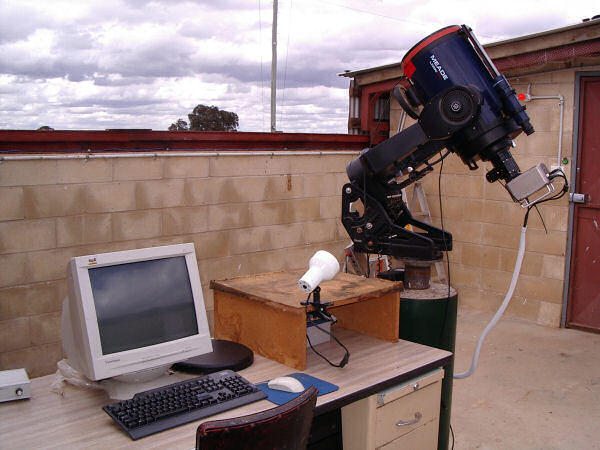
10" Meade LX-200 GPS - SBIG STL-1001E CCD Camera
AP=250mm FL= 2,760mm FR=f/11.04 FOV=30' 27"
square
Array= 1024x1024 @ 24microns/pixel. Image Scale=1.78^sec/pixel
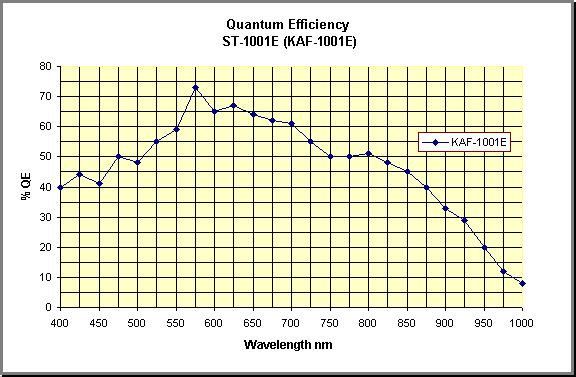
The entire remote control operation was designed and programmed by Andrew Mattingly of Sydney. Andrew jointly funds 50% of the ongoing expenses of the project with Wheaton College. The observatory building, video cameras, night sky camera and other computer systems and accessories were provided by Grove Creek Observatory.
Roof Motors:

![]()
How does the Wheaton Telescope Work?
Three computers control the operation:
1 - The Telescope Control Computer
2 - The Observatory Server
3 - The Sydney Web Server
The "Telescope Control Computer" is located in the remote controlled Western Observatory at Grove Creek. It controls the telescope pointing (within 1arc minute accuracy), CCD camera, Optec temperature compensated auto-focuser, monitoring light for the telescope status video camera and the Observatory's motorised sliding roof. The pointing accuracy of the system is done by automatically taking a short, low resolution CCD image through the telescope and then the software automatically compares that to how it should appear in a huge stellar catalogue. If the stars from the image do not match the catalogue, the telescope is "jogged" to the exact location of the night sky. This sort of accuracy is essential for automatic Super-Nova hunting and finding/mapping minor planets or asteroids. The "Telescope Control Computer" is connected via an underground Ethernet cable to the "Observatory Server", located 30 meters away in the main building's control room.
![]()
'The "Observatory Server" constantly sends out data from the Weather Station and Boltwood Cloud Sensor to the "Telescope Control Computer" for roof control, with software and relay hardware to control the roof motors. The Boltwood Cloud Sensor not only monitors cloud conditions but it is so sensitive, that only a tiny sprinkling of rain is needed to instantly trigger the observatory roof to close and lock. The weather station, via the Observatory Server, will also signal the Telescope Control Computer to trip the roof relays to automatically close if rain is detected, the humidity becomes too high, high winds are present, the internet connection is lost or if the sun is about to rise.
A sophisticated back-to-base alarm system with video, motion detection and infra-red sensors are
also incorporated at Grove Creek (protected by battery backup and UPS systems) to guard the Observatory against possible intruders. (Thanks very much to
Fordray Electronics in Orange, for the donation of the alarm system and also thanks to Greg Ford, who installed it at Grove Creek). In 2013 the observatories video security
systems were upgraded and additional surveillance cameras installed. In addition, a local farmer who lives 460 meters north of the Observatory, Geoff Gilbert, assists with PC
and telescope resets - as well as providing additional security for the facility.
Other computer hardware and accessories were donated to the project by individual
Grove Creek staff. The project is maintained by observatory staff - for the enjoyment of providing a service to Wheaton students, who are in the Northern Hemisphere and do not have access to the Southern Skies.

Top - Main building and sliding roof observatories
Bottom - Northern view and Eastern view of Radio Telescope
![]()
The Weather Station and Cloud Sensor - Protecting the Observatories:
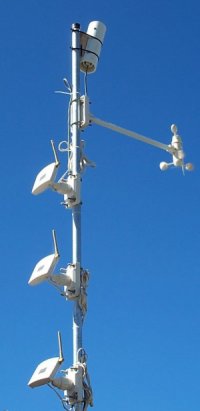
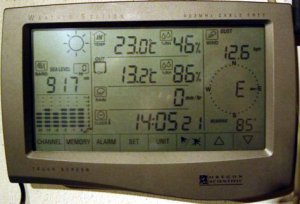
The wireless Weather Station showing sensors (Cloud Sensor at top) and receiver system.
We use the Oregon Scientific, model WMR-968, wireless weather station (shown above) to safeguard the remote observatories. The Boltwood Cloud Sensor is the white angled tube, shown on top of the weather mast. The weather station also provides the Trunkey Creek area with helpful online weather information and detailed historic data. For this, we use FreeWX weather software which reads the data from the serial port on the weather station to display useful weather data in a graphical form as well as uploading the data via FTP, to our online weather web page written by Greg Ford.
Here is a sample screen grab of the output of the weather station software, which we provide as a public service to the Trunkey Creek residents and users of our internet telescopes:
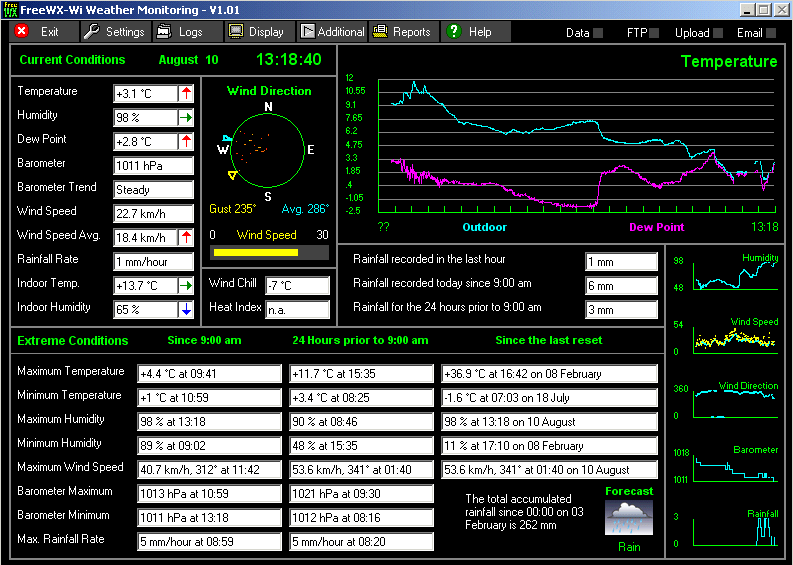
Would you like the graphical program that updates LIVE from our weather station on your desktop?
Download the FreeWX web client for Windows 98/XP/Vista/7, unzip and install.
Read the enclosed readme.txt file for installation instructions.
![]()
The "Sydney Web Server" is where all the magic comes together! It receives the raw data from the "Telescope Control Computer" from the internet, sent by a Telstra 3G Wireless broadband connection at the Observatory. It enables account holders to login and operate the telescope to take CCD images via the Internet, just using a simple web browser! At the time, this was a break-through in remote telescope operation, as other remote controlled telescope operations require users to have detailed knowledge of both telescope pointing control software and CCD Camera imaging software. However, with the Wheaton Telescope, no special software is required at all! The web user interface is extremely user friendly and very powerful, containing a huge database of catalogued objects and compatible with any internet browser.
In summary, the Wheaton Telescope at Grove Creek is totally unique in its operation. Powerful, sophisticated, fully self-protected but still easy to use - from the novice to the professional astronomer. Users just enter their desired object from millions of objects and the image will be taken for them - always landing right in the middle of the CCD field of view. Or, the server can suggest a large number of interesting objects to the student to study. Many important research programs have been conducted with the Wheaton Telescope, including the search for Gamma Ray Burst Stars and the search for near earth orbit crossing asteroids.
CURRENT RESEARCH PROJECTS CONDUCTED
WITH THE WHEATON TELESCOPE AT GROVE CREEK:
Grove Creek Observatory is part of NASA's Gamma Ray Bursts Coordinates Network.

Check out NASA's GCN Network
- the optical search for gamma ray bursts.
Grove Creek Observatory is a registered International Astronomical Union Minor Planet Centre
Observatory (Number E16) and is involved with the search for near earth asteroids.

Click here for our current and past minor planet observations..